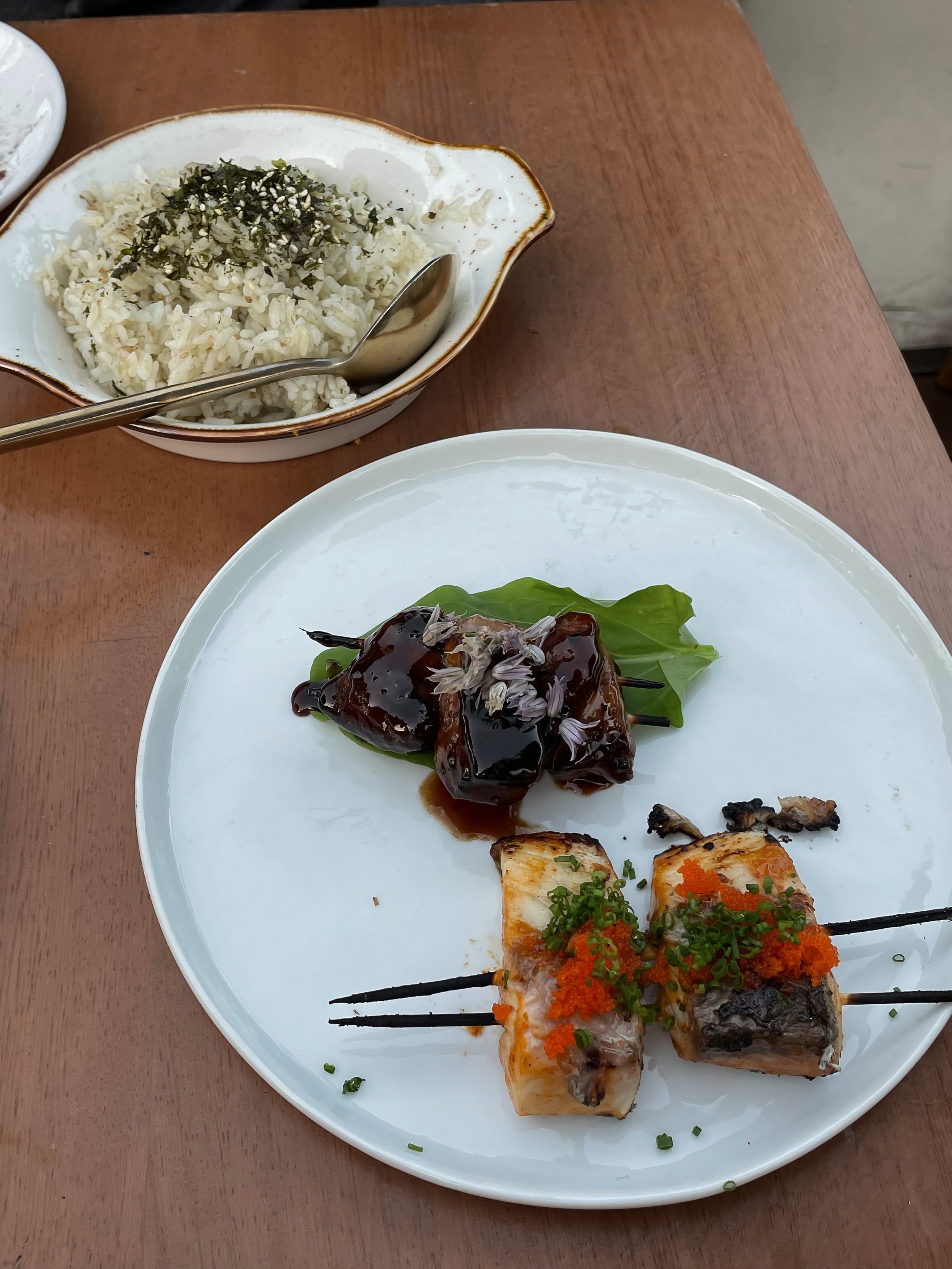7 tips to feel your best when eating out
Going out to eat can be a big source of stress for those who are trying to make healthier choices, but it really doesn’t have to be. While cooking at home is always going to be the most supportive to our health, I believe trying new places, enjoying good food & good company is healthy, too. Aaaaand you don’t have to sacrifice feeling good.
Below are 7 tips to eat healthy when eating out so that you can enjoy yourself without stress and still feel your best.
1) Set some boundaries, but don’t freak out if you go outside of them.
It helps to have a goal in mind for how many times you’re willing to eat out each week vs. how much you’re willing to cook at home, but know that this will change week to week. There’s no reason to stress if you go over your weekly goal, and similarly, there’s no need to say no to impromptu sushi with friends just because you’ve already reached your “weekly limit.” You can set some boundaries and goals while simultaneously surrendering to the ebbs and flows of life. This is what balance looks like.
2) Follow your hunger cues.
If you find yourself uncomfortably full whenever you go out to eat, it might be a sign to slow down and reconnect with your hunger cues. When you’re honoring your body’s hunger cues, there’s really no need to worry about calories and what you “should” or “shouldn’t” order when you go out to eat. You can enjoy yourself without stress, knowing your body will tell you when it’s time to eat and when it’s time to stop.
To practice tuning into your hunger cues, start by noticing what it feels like to gradually get hungry. Then, be as present as possible with your meal. When you reach a point of comfortable fullness and satisfaction, it’s time to stop. If you feel the fullness cue and you still want to keep eating, take a 5-10 minute break from your plate and come back to it. Nine times out of ten, you will lose your appetite when your body has a chance to process that it’s full.
A good frame of reference I like to use for fullness: on a scale of 1-10, 1 being starving and 10 being uncomfortably full, you want to land somewhere around a 7. It also helps to check in on emotional eating and bored eating habits, as this typically isn’t true hunger, but rather a habit our brain develops to soothe uncomfortable emotions like boredom or stress.
3) Chew slowly.
Have you ever eaten a basket of chips so quickly that you didn’t even get to enjoy it? Slowing down at meal time not only activates your “rest & digest” mode, making it much easier for your digestive system to break down and absorb food, but it also allows you to notice the flavors, textures and qualities of your food makes the whole experience of eating out so much more enjoyable! Eating slowly also helps you “hear” your fullness cue and prevents over eating.
4) Share dishes
If you’re someone who loves to take advantage of all the menu options, one of my favorite ways to do this is by splitting entrees, apps, and desserts with the table. Small-plate restaurants are increasingly popular, and there’s something fun about sharing the experience of a dish with friends/loved ones. Remember, when it comes to splitting, you can always order more if it’s not enough!
5) Digestive bitters/enzymes to ease bloating
Since we don’t always have control over the ingredients that are used at restaurants, digestive enzymes can help ease bloating and support our gut, especially for those of us who are sensitive to bloating and discomfort. Digestive bitters such as dandelion, wormwood and bitter melon are great for optimizing digestion and have been used for centuries in Eastern cultures for this purpose. Of course, be sure to talk to a doctor or practitioner before experimenting with any supplements.
6) Focus on blood sugar balance
Instead of worrying about how many calories are in your dish, focus on choosing menu items that will naturally balance blood sugar. This means choosing dishes that contain adequate protein, fiber-rich carbohydrates, and fats. Protein and fiber are harder to find, as fats and refined carbohydrates are usually the dominant ingredients at most restaurants, so I like to start my meal with a protein-rich or fiber-rich appetizer when I can. You can a list of my favorite high-fiber food sources here.
7) No need to “save up” calories
A mistake I often see when it comes to eating healthy while eating out is trying to restrict calories or over-exercise in order to “earn” calories for a big dinner. Not only does this create a negative relationship with food and exercise, but it usually backfires and sets you up for over eating. You don’t ever need to “earn” the right to eat. (Read that one again!) Instead, focus on eating well-balanced, fiber-rich meals throughout the day to keep you full and energized leading up to dinner. That way, you’ll make food choices from a more balanced state of mind.
8) Find restaurants that use local, high quality ingredients
I love supporting restaurants that go out of their way to provide high quality ingredients and get creative with what they’re able to source locally. Not only do local ingredients taste so much better, but it also feels good knowing that we’re fueling our bodies and supporting local farmers. Choosing restaurants that prioritize quality ingredients doesn’t mean you have to eat at raw vegan cafes or restaurants that only have salad bowls on the menu. Eating local does not have to be boring or dull (in fact, it’s usually quite the opposite!). Plus, the more we support these businesses with our dollar, the more mainstream and accessible high-quality, local ingredients will become.
I hope you found this guide helpful in creating a more balanced and healthy relationship with eating out. As you can see, there’s no need to stress about calories, eat boring salads, or say no to fun dinner plans when you have a healthy mindset around food. As long as you’re following the practices in this guide, you can feel free to enjoy good food and good company without feeling overly full, indulgent or guilty.



